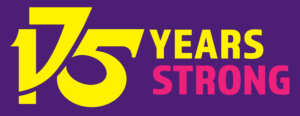Teachers’ own working conditions often intersected with what they believed were the best learning conditions for pupils. When, in 1988, the Conservative government introduced national primary-school tests in reading and maths, the EIS set to work organising a boycott.
This resulted in more than 90 per cent of parents formally indicating to schools that they would be withdrawing their children from these tests.
Local authorities – which were largely Labour controlled or independent at that stage – were not particularly sympathetic to the Conservative party’s educational agenda. As a result, no countermanding orders were issued: the children simply did not sit the tests. This pattern was repeated across the country, in a range of socioeconomic areas.
As a result, the government modified their testing proposals significantly, so that the tests no longer had to be sat at a specific time: they could be taken whenever the head or teacher deemed appropriate. It also conceded that teacher assessment should be given equal validity to test results.
This was a partial victory for the EIS, which remains critical to minimising the abuse of testing results. Even today, the role of SNSAs is central to the same debate.

Since the Scottish Parliament was reconvened, education has been a wholly devolved area, creating a new set of dynamics around the development of education policy.
Although Scottish education had always been distinct from education in the rest of the UK, devolution saw a series of Scottish governments much more inclined towards engagement with the professional associations across more than simply pay and conditions. Social dialogue became a default approach.
This has led to genuine collaboration – for example, when the prescriptive five to 14 curriculum was rejected, and Curriculum for Excellence introduced in its place.
The EIS contributed significantly to this development. It has been able to advance the big issues of the day with some authority, because of the ongoing professional relationship between EIS officials and senior elected members. In addition, the EIS continues to represent the vast majority of Scottish teachers. When the EIS says to the government, “Our members have argued that this is what should happen,” it is thus a very powerful argument.
As a union, the EIS has been invited by government and others to take part in a variety of national discussions on education. By accepting these invitations, the union uses every opportunity to pursue its dual objectives: sound learning and the benefit of teachers.
No matter the issue, the EIS is there, arguing the case for teachers and their students. They are there, advocating for the employment of teachers in early years as a way of tackling the impact of poverty.
They argue for smaller class sizes for the benefit of learners and teachers. They challenge excessive workload and assessment overload in the senior phase. They are lobbying for the abolition of tuition fees for instrumental music.
The EIS fights for quality, equitable Scottish education, on many fronts – and wins on many, too.
ACKNOWLEDGEMENTS:
Research, interviews and substantive writing:
Adi Bloom
Design and lay-out:
Stuart Cunningham and Paul Benzie
Additional writing and research:
EIS Comms Team and assorted staff members
Printed by:
Ivanhoe Caledonian, Seafield Edinburgh
Photography:
Graham Edwards, Mark Jackson, Elaine Livingston, Toby Long, Ian Marshall, Alan McCredie, Alan Richardson, Graham Riddell, Lenny Smith, Johnstone Syer, Alan Wylie


Thanks to the many former activists and officers who gave of their time to be interviewed and taken a stroll down memory lane. And of course a very special thanks to the EIS members who created this history through their activism and commitment to the cause of Scottish Education.
© 2022 The Educational Institute of Scotland